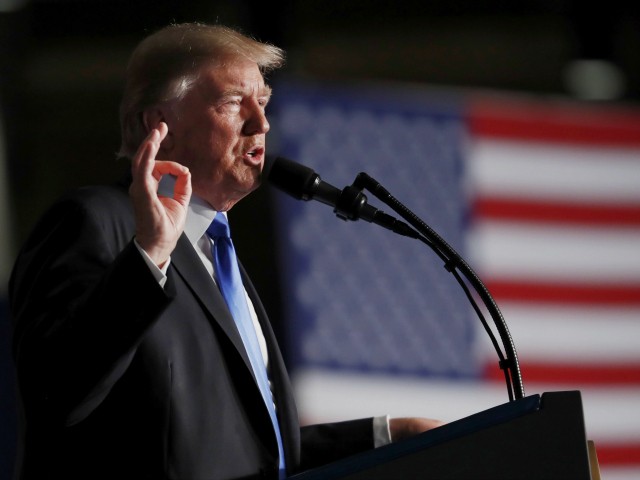President Trump unveiled his plan for Afghanistan after seven months of deliberation Monday evening, announcing tweaks around the edges of the current strategy instead of a different approach.
He announced five “core pillars” to the approach: getting rid of any timelines for how long U.S. troops would remain in Afghanistan; using all elements of power, including diplomatic and economic; getting tougher on Pakistan; getting India to help more with economic development; and expanding authorities for U.S. forces to fight terrorists.
What the president did not announce was how many more U.S. troops would head to Afghanistan, which he decided earlier this year to leave up to Defense Secretary Jim Mattis to determine.
He did, however, say the U.S. would no longer talk about troop levels or drawdown dates, making it unclear whether troop increases would be announced. There are currently about 8,400 U.S. forces in Afghanistan, and the president has reportedly approved of a plan to send about 4,000 more.
“We will not announce our plans for further military activities. Conditions on the ground, not arbitrary timetables, will guide our strategy from now on. America’s enemies must never know our plans or believe they can wait us out. I will not say when we are going to attack, but attack we will,” he said.
He floated the idea of a “political settlement that includes elements of the Taliban and Afghanistan, but added, “nobody knows if or when that will ever happen.”
He said it was up to the people of Afghanistan to “take ownership of their future” and to “achieve an everlasting peace,” but did not say how that would happen.
“We are not nation-building again, we are killing terrorists,” he asserted.
Trump did not talk about how much more the new strategy would cost, but said the U.S. would ask its NATO and other allies to do more. The U.S. spends about $45 billion per year in Afghanistan. While he did not announce a withdrawal date, he said “our support is not a blank check … The American people expect to see real reforms, real progress, and real results. Our patience is not unlimited.”
The speech was a disappointment to many who had supported his calls during the campaign to end expensive foreign intervention and nation-building. He acknowledged the frustration that Americans felt after 16 years of war without an end in sight.
“The American people are weary of war without victory. Nowhere is this more evident than Afghanistan the longest war in American history, 17 years. I share the American people’s frustration over a foreign policy that has spent too much time, energy, money and most importantly, lives,” he said.
However, he said despite his “original instinct” to pull out, “decisions are much different when you sit behind the desk in the Oval Office, in other words when you are president of the United States.”
After studying the Afghanistan in “great detail and from every conceivable angle,” he said he did not want to repeat the mistake of the previous administration in Iraq and pull out too early, leaving a vacuum for terrorists to fill.
“We cannot repeat in Afghanistan the mistake our leaders made in Iraq,” he said. “We must address reality.”
The president said that today, 20 U.S.-designated foreign terrorist organizations are active in Afghanistan and Pakistan, and cited last week’s terrorist attack in Spain as evidence terrorists must be defeated.
“We will defeat them and defeat them handily,” he said. “In Afghanistan and Pakistan, America’s interests are clear. We must stop the resurgence of safe havens that allow terrorists to threaten America.”
Trump announced the new strategy at Army Post Fort Meyer in Arlington, Virginia, surrounded by soldiers, and spoke of the unity among forces trying to achieve one mission and called for the same unity among Americans.
“All service members are brothers and sisters, they’re all part of the same family. It’s called the American family,” he said. “Let us find the courage to heal our divisions within.”
